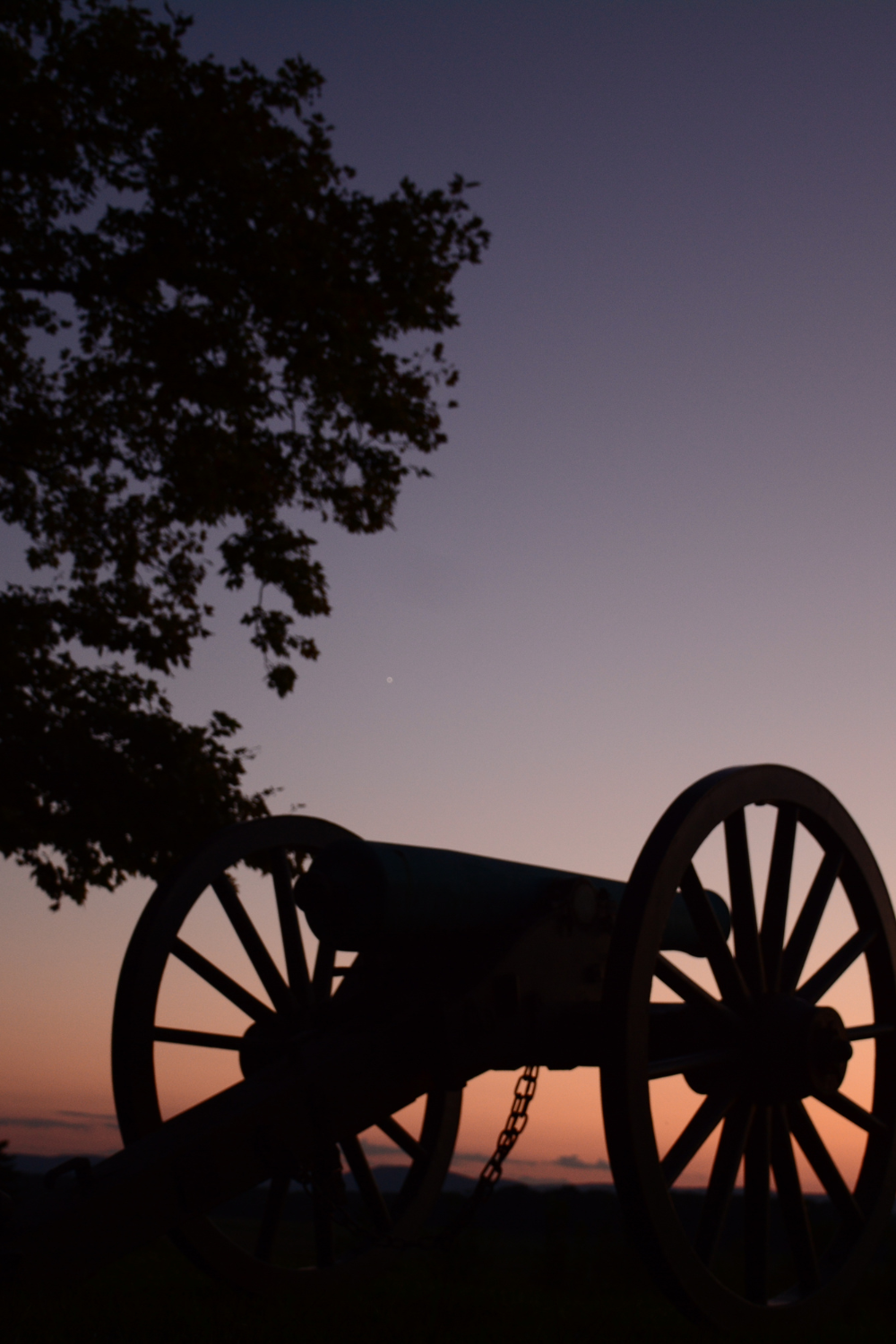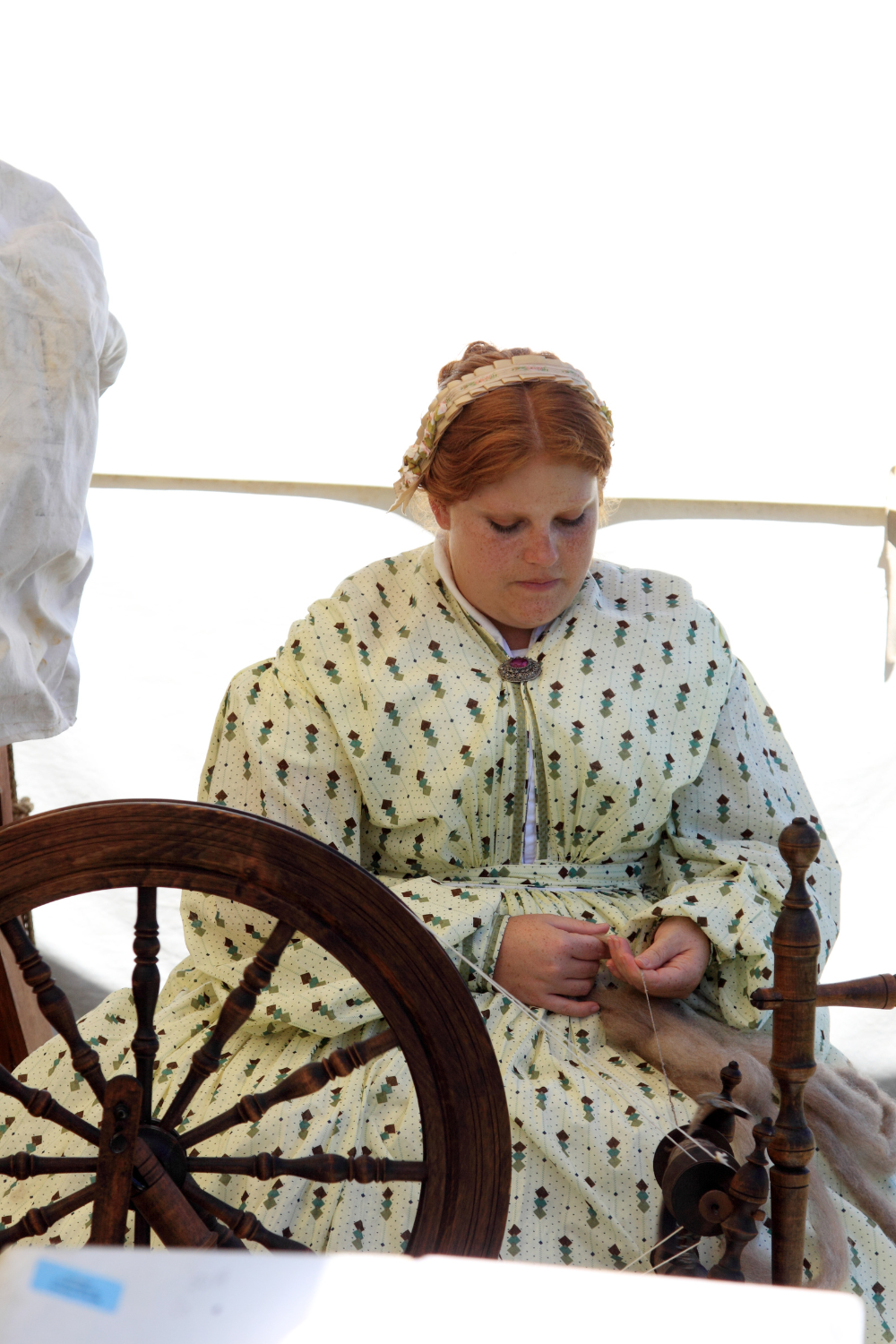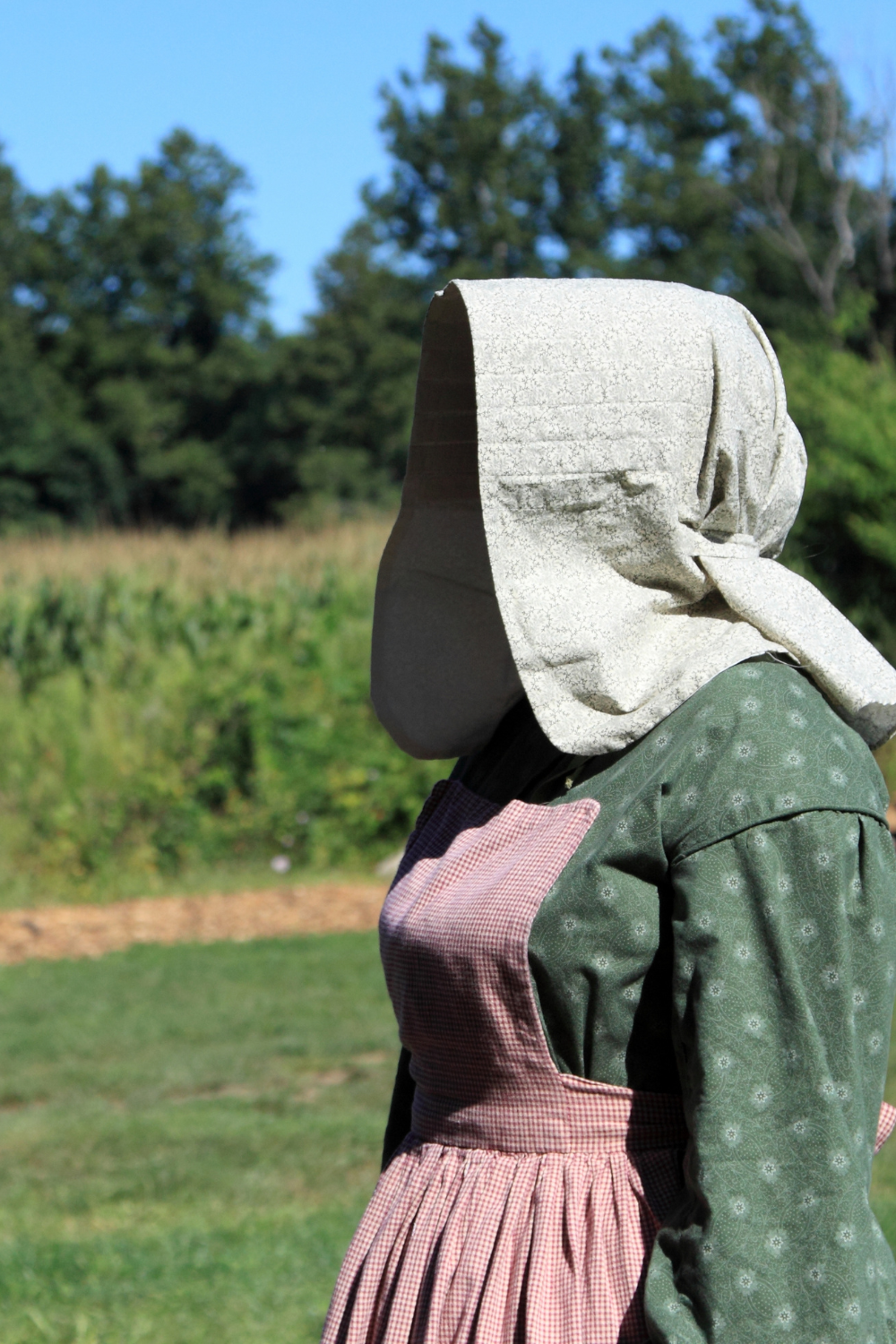This week I attended a reenactment. One of my friends is a member of a local historical society and one of the things she does – and excels at – is reenacting an event from the past. Sometimes she merely is in period dress and acts as a guide through a historical building. But sometimes she, along with a few other members of her group, dons Civil War period clothing and takes on the persona of a real human being. Someone who lived during that tragic period of our US history. The actors do research and learn as much as they can about the person they will be telling the audience about.

There were the two old men – one on the side of the Confederacy and one on the side of the Union – who came back from the war, maimed and broken, but lived to a ripe old age. They told of the horrors of battle.

There were two young wives, left to fend for themselves. Forced to keep the farms running; plant the fields, secure the livestock, protect the family, plus do all the things a young mother must see to for her children. They each said they didn’t even care which side won; they just wanted their menfolk back and for life to return to normal. It never did for either of them.

Then there was the young soldier, full of bravado, who got hurt immediately and was shipped off to a “hospital”. He told of the horrible conditions and deprivations and how he had eventually died there of his wounds. He is buried in an unmarked mass grave somewhere far from home. No one knows where.
This activity is a fundraiser. All monies gained are to help with the upkeep of the country cemetery where these deceased people are buried. They were locals who came from local families – there are many graves in the cemetery with the same surnames – and some of those families still reside in the area. The cemetery is used even now. So it is fairly easy for the actors to get accurate details about the deceased persons they are portraying.
But mainly, the monies are used to help identify the many, many graves that have no markers other than a number or, sadly, just a rock. And to help purchase headstones once the occupant is identified. It matters not which side they were on. There is no place for politics here.
General Sherman on his march to the sea said “War is Hell.” And that is true But not just for the men who were fighting. This reenactment showed us how it was for soldiers on both sides, as well as the women who were left behind to survive however they could. Some only barely managed to keep their families together. Some failed, though they valiantly tried.

There are people who ask why anyone should be concerned about a little country cemetery where many of the graves are over a hundred years old. The people who are buried there are not famous. They bring no notoriety to the area. From my point of view, there is a simple answer. We can only move forward by knowing where we’ve been. And, if we ever hope to not continue to make the same mistakes over and over, we must know how those mistakes started. Only then can we attempt to correct them. We must learn from our past. Listening to the words these people spoke, hearing the anguish in their voices, and looking into their eyes as they recount the most horrible parts of their lives makes it all seem real. We can not forget.

This historical reenactment group made these five long-dead people come alive for a time. But more importantly, it made us, the audience, think.
![]()

Very good essay on the reenactment. I really enjoyed all the stories, heart wrenching as they were. So,glad our group of friends went to this!,
Thanks for doing this piece on the reenactment. The group always does a good job of portraying the hearts and personalities behind the stories. Looking forward to the next one –